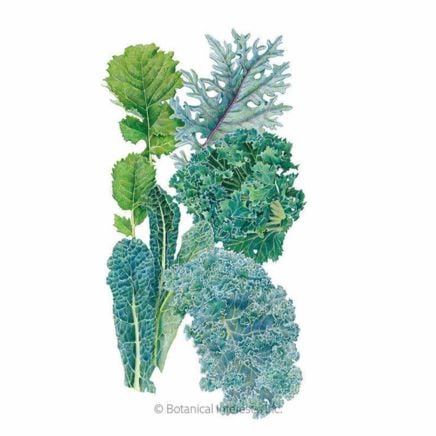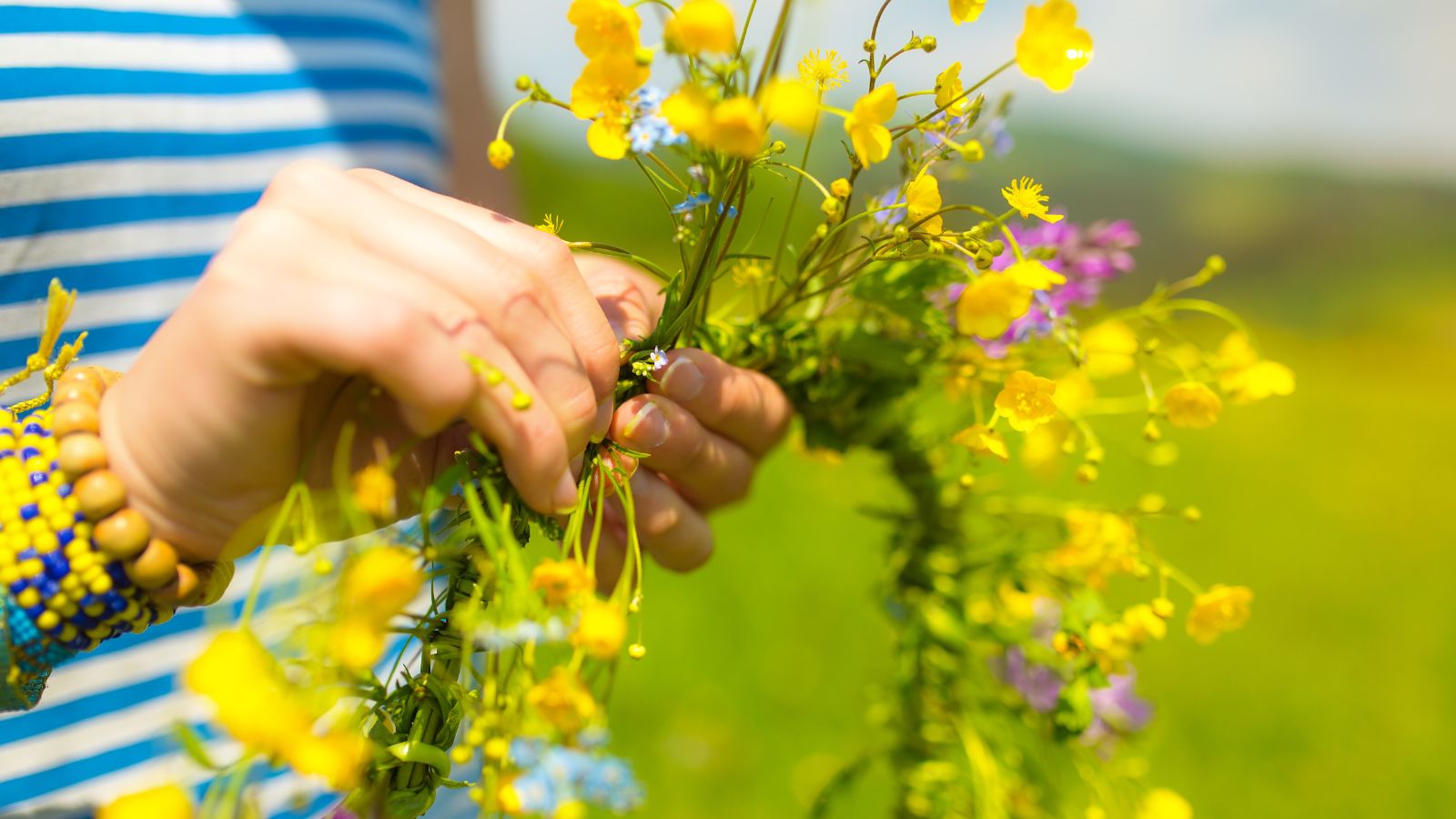PROTECT YOUR DNA WITH QUANTUM TECHNOLOGY
Orgo-Life the new way to the future Advertising by AdpathwayThe solstices are important for gardeners. The winter solstice marks the beginning of late winter and early spring. It starts a period when the days lengthen as winter shifts to spring. It’s time to start seeds and prepare for the upcoming growing season.
The summer solstice, between June 20 and 22, is a bit different; the days shorten after the date, and the weather remains warm until August, through October. Many plants bloom, fruit, and grow seeds as they rush to reproduce before the first frost arrives.
Gardeners celebrate the summer solstice by harvesting, relaxing, sowing seeds, and partying. Whether you garden on a balcony or an acre, it’s a great time to reward yourself for all the hard work you’ve done so far. And, if you missed gardening in spring, it’s not too late to start now!
Burgundy Broccoli

Red Acre Cabbage

Premier Blend Kale

Start Fall Crops
 Start seeds for fall during this period.
Start seeds for fall during this period.Tomatoes are ripening, corn stalks are lengthening, and sunflowers are growing tall! Though it seems like there’s nothing else to grow, now is a perfect time to prepare for the cool weather to come. Broccoli and its relatives, like cauliflower, cabbage, and kale, benefit from growing in the fall rather than under summer’s heat.
The summer solstice is a good time for gardeners to start fall crop seeds indoors, or sow them directly outdoors in pots, raised beds, and in-ground beds. Leafy greens are also great to start on the summer solstice. Sow arugula, lettuce, sorrel, and Swiss chard. Mustard, collard greens, and mâche are other unique greens for the fall.
Some plants overwinter in mild climates. Cabbage and kale grow sweeter with a light frost, and root crops like beets and carrots benefit from cold weather. Don’t stop now! Plant more seeds to have harvests from now until next spring.
Plant Flowers
 Some fall flowers are ideal for planting at midsummer.
Some fall flowers are ideal for planting at midsummer.Spring and summer bloomers are in full effect, but it doesn’t mean it’s too late to plant flowers! Gardeners can plant fall and winter-blooming species on the summer solstice. Violas, pansies, and chrysanthemums may bloom in the fall if you plant them now.
It’s also not too late to successively sow heat lovers like sunflowers, nasturtiums, and daisies. Fill empty pockets of soil with wildflower seeds and seedlings to cover the ground with blooms. The more flowers you have, the more pollinators that will visit your garden throughout the seasons.
Harvest Veggies, Fruits, and Herbs
 Strawberries and other produce ripen around this time.
Strawberries and other produce ripen around this time.Now that your spring and summer crops are producing leaves, veggies, and fruits, it’s important to harvest them continuously to ensure they continue producing. When you pick off a plant’s seeds and fruits, you trick it into thinking it into growing more. It wants to reproduce before the first frost arrives.
Leafy greens are similar. Pick cilantro consistently to keep it from bolting, and cut lettuce heads to encourage regrowth. Cut lavender and rosemary blooms to use indoors, and prune oregano and thyme to promote leafy growth.
Gardeners can harvest some fruits, like raspberries, blueberries, and strawberries around the summer solstice. Pick them when ripe to prevent diseases and pests from getting to them before you! If you live in a mild climate, you likely have squash, tomatoes, and other summer crops to harvest, too.
Water the Garden
 A timed sprinkler ensures plants are watered properly.
A timed sprinkler ensures plants are watered properly.The soil dries quickly when high temperatures are common and rain is infrequent. The summer solstice marks a time when watering is crucial in maintaining a healthy garden. Consistent moisture is necessary for many crops to thrive.
Prevent diseases and pests in late summer by watering consistently now. Setting a sprinkler on a timer is an easy way to automate watering if you’d rather not do it yourself. Irrigation can be as simple or elaborate as you’d like it to be. Drip irrigation, hand watering with a hose, and sprinkler hoses are other ways to moisten the garden.
Aside from your plants, other living creatures need water to survive. Think of the pollinators, predatory insects, and birds! Provide them with a bird bath or a saucer of water to satisfy their thirst.
Light a Bonfire
 Having a bonfire is a great way to celebrate the season.
Having a bonfire is a great way to celebrate the season.Celebrate like many people have celebrated before you by lighting a bonfire. It symbolizes sending energy to the sun to encourage abundant harvests in the fall. Whether you have a small outdoor pit or a large space for a bonfire, you can celebrate the solstice with a bonfire or campfire on the date.
Wildfires are a concern in some areas, so midsummer may not be the best time to start a bonfire. It’s illegal in some states to light a fire in June. Be sure to look at local recommendations before putting together a bonfire. Instead, light a candle as a celebratory substitute!
Make a Flower Crown
 Use flowers with bendy stems to create crowns.
Use flowers with bendy stems to create crowns.As with bonfires, another way people celebrate the solstice is with flower and herb crowns from their harvested plants. All you need to make one is some flexible plants with bendy stems. Weave them in a large circle, and tuck flowers and herbs in the weaves to brighten the crown with fragrance and color.
Here are some excellent herbs for weaving:
- Mint
- Lavender
- Young Rosemary
- Sweet Annie
- Sage
- Daisies
- Chamomile
- Yarrow
No matter which flowering and fragrant plants you choose, you’ll participate in an ancient tradition by weaving a flower crown. Put it on display in a parade, or wear it for a profile picture to commemorate the date.
Look at the Moon
 The moon will reach the highest point near midnight.
The moon will reach the highest point near midnight.Coincidentally, the full moon sits at its lowest height in the sky around the same time that the sun is at its highest. The sun is high in the sky at the summer solstice, and the full moon will consequently be low in the night sky when it occurs after the solstice.
Find the next full moon date and get ready for a treat. It’ll reach its highest point around midnight before it settles down while the sun rises. Stay up late to enjoy the show!


 3 weeks ago
18
3 weeks ago
18





















 English (US) ·
English (US) ·  French (CA) ·
French (CA) ·